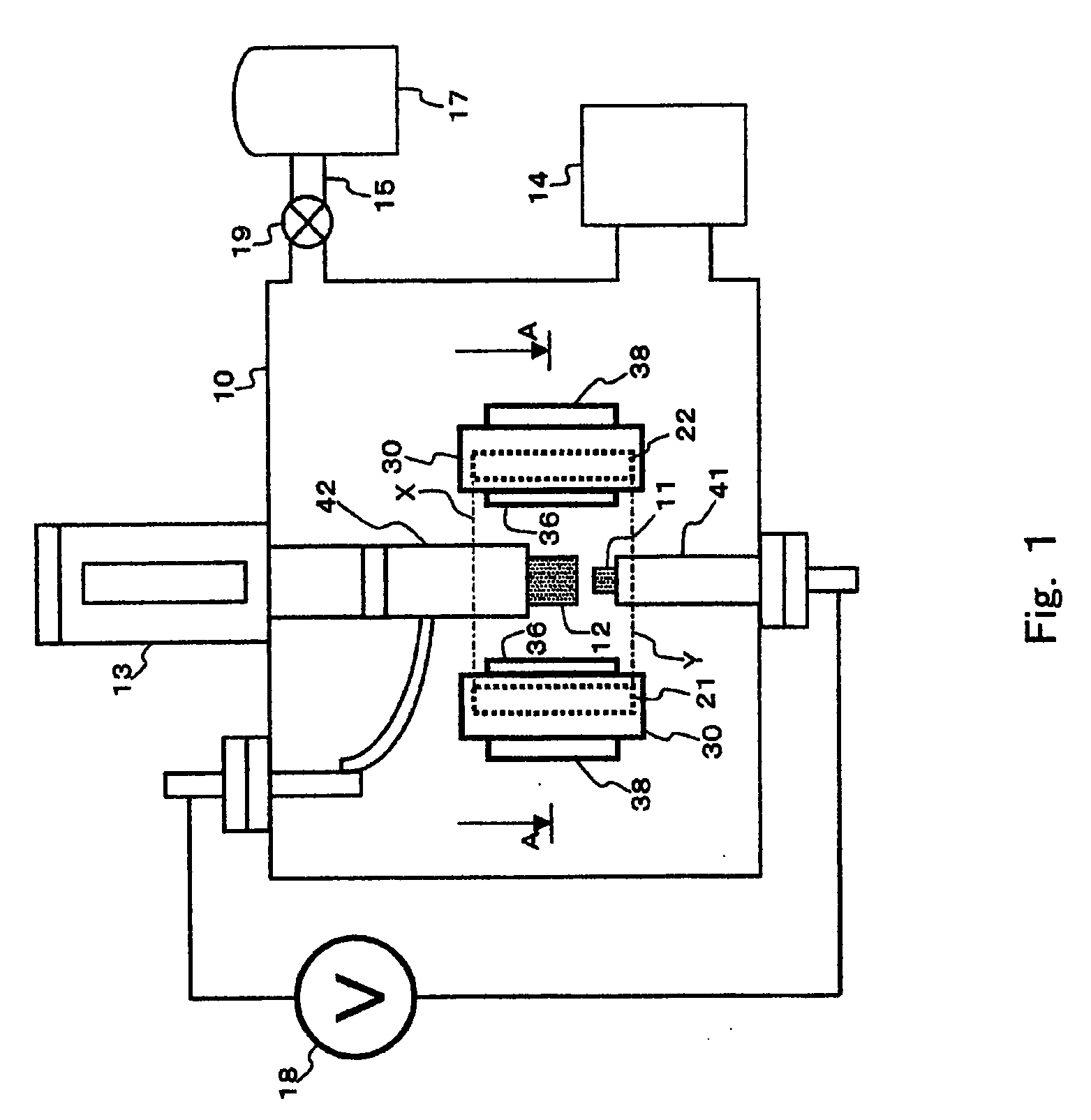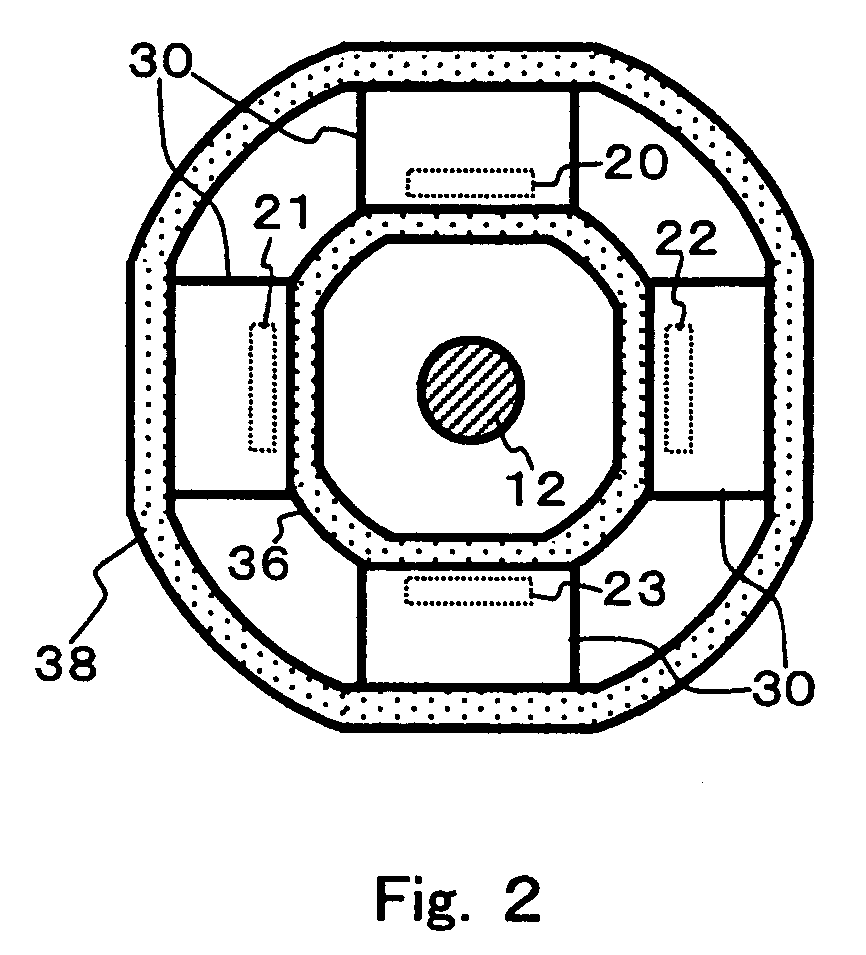Manufacturing apparatus and method for carbon nanotube
a technology of carbon nanotubes and manufacturing apparatuses, which is applied in the direction of carbonsing rags, chemical/physical/physical-chemical processes, energy-based chemical/physical/physical-chemical processes, etc., can solve the problems of difficult to obtain a few grams of specimens, no particular boundary, and the controversy of carbon nanotube generation methods
- Summary
- Abstract
- Description
- Claims
- Application Information
AI Technical Summary
Benefits of technology
Problems solved by technology
Method used
Image
Examples
Embodiment Construction
[0115] Hereinafter, description will be made of an example of the present invention. However, the present invention is not limited to the example. The manufacturing apparatus shown in FIG. 1 is used to manufacture a carbon nanotube. At this time, binchotan charcoal serving as the porous carbonaceous material is used as the electrode 12 (anode). The binchotan charcoal to be used is subjected to the dehydration process by the heat dehydration method at 200.degree. C. in the atmosphere for two hours. FIG. 6 is a scanning electron microscope (SEM) photograph (at a magnifying power of 500) of a surface of the binchotan charcoal used in this example. It is observed from the photograph that there exist a number of holes on the surface of the binchotan charcoal.
[0116] Note that for the observation using the scanning electron microscope, a scanning electron microscope S-4500 manufactured by Hitachi Ltd., was used. Also, the magnifying power for the photograph has an error to a certain degree...
PUM
| Property | Measurement | Unit |
|---|---|---|
| diameter | aaaaa | aaaaa |
| Young's modulus | aaaaa | aaaaa |
| temperature | aaaaa | aaaaa |
Abstract
Description
Claims
Application Information
 Login to View More
Login to View More - R&D
- Intellectual Property
- Life Sciences
- Materials
- Tech Scout
- Unparalleled Data Quality
- Higher Quality Content
- 60% Fewer Hallucinations
Browse by: Latest US Patents, China's latest patents, Technical Efficacy Thesaurus, Application Domain, Technology Topic, Popular Technical Reports.
© 2025 PatSnap. All rights reserved.Legal|Privacy policy|Modern Slavery Act Transparency Statement|Sitemap|About US| Contact US: help@patsnap.com



